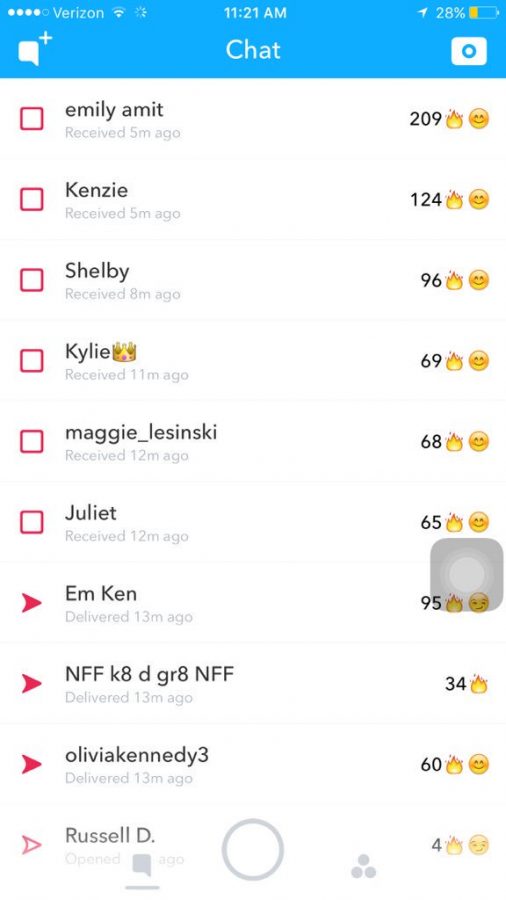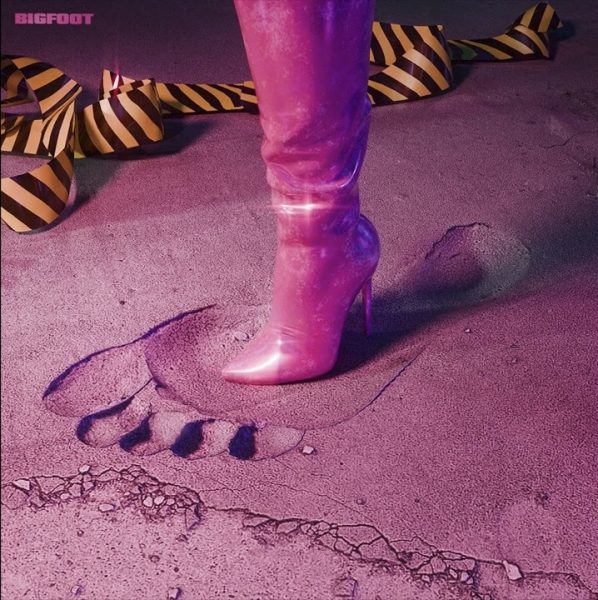Snapstreaks: The Shackles of Social Media
A twitter user posted a screenshot of their screen to demonstrate the high numbers they have for streaks. The user claimed that it was one of his biggest accomplishments.
June 5, 2019
Social media has taken center stage as one of the most important elements of our daily lives. Our eyes are constantly glued to our screens as we scroll through our Instagram feed or click through our snapchat stories. Yet a factor of our daily social media use is the habitual sending and receiving of snapchat streaks. But what exactly is a “streak?”
Snapstreaks are formed when two users send one another a photo within 24 hours for a continuous period of time. After three days, a small number and emoji will appear next to the other’s name, signifying the start of a “streak.” For many people, sending a photo with the caption “streak” has become a habit and you can often hear a friend say, “Did I send my streaks today?”
Maintaining these streaks and having a high number is often incredibly important to many individuals. Participants of this prevalent practice are dedicated to keeping streaks with both close friends and total strangers. A person’s list of streaks can consist of one’s best friends as well as a stranger who goes to school three states away.
No one besides the user and the individual at the other end of this interaction can tell that a streak exists between them. Unlike followers, other users can’t be impressed by the high number of friends or connections you have with other people. The only ones that know are you and your snapstreaks buddy. So what is the purpose of a number and a fire emoji next to another’s name?
To explain why maintaining streaks and having a large number of them is so important to many people can often be attributed to the sense of pride and reassurance that comes with the high number. It establishes that there exists a strong connection between oneself and another as well as proves how many associates one has. The more streaks in your list can sometimes feel like the more friends you have.
Yet the issue with judging one’s connections and worth off streaks can be highly misleading. An individual can have 100 streaks, but not a single one is a friend who he or she communicates with outside of the daily mirror selfie and the caption, “Streaks.” Another can have only two streaks, but both of those numbers came from daily conversation between oneself and another individual.
When really considering this routine practice, it begins to materialize as a bit ridiculous. What is the importance of a digital number? One may argue that a streak is an investment in maintaining a relationship with a friend or keeping in touch with a childhood companion. But a streak is anything but a conversation. It is a number and a title, not a connection and a friendship.
A streak is meant to signify daily communication with a friend, demonstrating to one another how often the two of you talk and send photos back and forth. Yet the practice has slowly eroded into another method of using social media to prove relationships and self-worth.
Snapstreaks, in all honesty, are the biggest shackles of social media. Keeping them becomes the center of stress and if another loses a streak, the other end may feel that the disappearance of the number is a signal that the other end has lost interest in maintaining a relationship. Many of us have begun to keep streaks, not out of a desire to maintain a line of communication, but because the two of you have already reached 100, so what is 100 days more. Students especially, like Jayden Hawley (11), “maintain [their] streaks out of obligation and feelings that it feels strange to end them.” We have also begun to judge the quality of a friendship by the number beside their name, a poor indicator of whether or not a connection is strong. Streaks have become an absurd obligation, cuffing us to our phones and encouraging us to value a digital number over a friend sitting beside us.













































